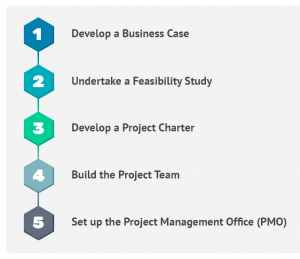Well-being at work is no longer a trend, but a priority. Take the Workforce Attitudes Towards Behaviour Health report, where 48 percent of respondents revealed that they have cried at work. No HR leader can ignore this unsettling statistic.
Corporate wellness programs and employee engagement initiatives are not new players on the field of retention. Yet, something seems to be missing for employees to be happy, motivated, and productive at work.
How your employees feel at work should at the top of your list of metrics to track; especially when 91 percent employees who feel cared for say they’re likely to recommend their organization as a great place to work (compared to 9% of those who don’t feel cared for).
In the last decade, work shifted its focus on building an inclusive employee experience that blends productivity, fulfillment, and recently, well-being. If you’re committed to make sure your workforce feels good at work, it’s time to include well-being at work in your employee engagement strategy.
1. Provide a sense of safety with financial well-being
A sense of safety is a fundamental aspect of well-being. If employees can’t make ends meet at home and worry about basic needs such as food or healthcare, how can they be engaged, focused, and productive at work?
Millennials make up the most important demographics in the workplace. At the same time, they’re the most indebted generation (average of $ 27,900) resulting in unprecedented levels of stress.
For a population balancing student debt and a busy lifestyle, offering financial advice or workshops could be a game changer. Immediate benefits are obvious: stress reduction and better well-being at work. And in the long term, it strengthens your position as a company who cares for its workforce, inside and outside of the office.
2. Balance work’s ups and downs through mindfulness
Today’s work happens in open spaces, which is great to encourage collaboration. But a side effect of always being in social conversations is overstimulation.
When employees can’t cope any longer, it can turn into conflictual relations and impede productivity. For example, 70 percent of workers reported that conflicts with a colleague impacted their concentration at work. But unresolved conflicts at work have long-term effects, such as a negative workplace culture and increasing stress on those involved.
Do you provide opportunity for employees to “release steam” on the spot?
A quiet room is a simple initiative for better well-being at work. It acts as a safe space for employees to find moments of serenity in a hectic day or remove themselves from noise and find focus. Also, it’s an added bonus if they safe spaces are technology-free; as they help your employees reconnect on their human side and fight digital over-stimulation.
3. Ensure your work environment supports physical well-being
The sedentary nature of work is known to be bad for health: prolonged periods of sitting would increase the risk of death from cardiovascular diseases and cancer.
An environment supporting physical well-being at work is a must-have. And here, small things can make a big difference:
- Revisiting drink options: Do you offer free coffee only, or a range of infused waters and teas?
- Promoting movement: Do you have a movement room or encourage sports via dedicated wellness programs?
- Adjusting natural light: Natural light improves mood, health, and sleep, and can fight depression. Offices with natural light are known to enhance an employees’ mindset and productivity. If you can’t make structural changes to your open space, know that changing fluorescent bulbs for natural light bulbs is enough to make a positive impact on your employees’ emotional health.
4. Use recognition to boost social well-being at work
The fourth industrial revolution is upon us and it promises technology will support how we work by being more human and collaborative. Companies supporting well-being at work and a positive atmosphere in the workplace will strengthen their organizational culture and optimize their marketplace potential.
To strengthen connections between colleagues and deepen social well-being, you should prioritize employee recognition. Recognition can transform the way your employees perform at work by boosting both engagement and productivity: 40 percent of employed Americans say they’d put more energy into their work if they were recognized more often. Furthermore, according to Achievers’ 2020 Engagement and Retention Report, 90 percent of employees say when they receive recognition it motivates them to work harder and 92 percent agree when they’re recognized for a specific action, they’re more likely to take that action again in the future.
A healthy workplace culture is a vibe more than a defined attitude. With recognition, you put humanity at the heart of your core values.
5. Ignore anxiety in the workplace at your own risk
Did you know two thirds of employees feel burnt out at work? And if burnout immensely affects employee well-being, consider its dramatic impact on organizations. The cost of anxiety is an estimated $ 125 billion to $ 190 billion in healthcare spending a year, according to Harvard Business Review.
Well-being at work is the trademark of a workplace where feelings and emotions are respected. Dr. Retell Sandhu sums up the case for a human work environment in a recent Forbes article:
“Since mental health is a core part of who we are as human beings, employers who want to care for their employees can’t ignore mental health. […] Work can be a source of purpose, passion and energy—or it can sometimes be a source of stress, anxiety and exhaustion. These experiences can either have positive or negative influences on our mental health—and our overall well-being. Similarly, our mental health can impact how we think, feel and perform at work.”
Over the years, anxiety in the workplace emerged as the next strategic priority for HR leaders. If you need hands-on solutions to address anxiety in your workplace, check out my 14 quick wins for stress management.
The future of work promises AI, robots, and co-working between humans and technology. But robots won’t be able to replicate the feelings that define us as human beings, such as creativity, empathy, or compassion towards others. These emotions can only thrive if your employees feel good about their well-being and their overall work experience. That’s why it’s time to make well-being at work a common cause across your company.
To learn more about how to improve well-being at work, access Achievers’ webinar recording, “The Evolution of Connection and Need for Belonging.”
Business & Finance Articles on Business 2 Community
(58)




